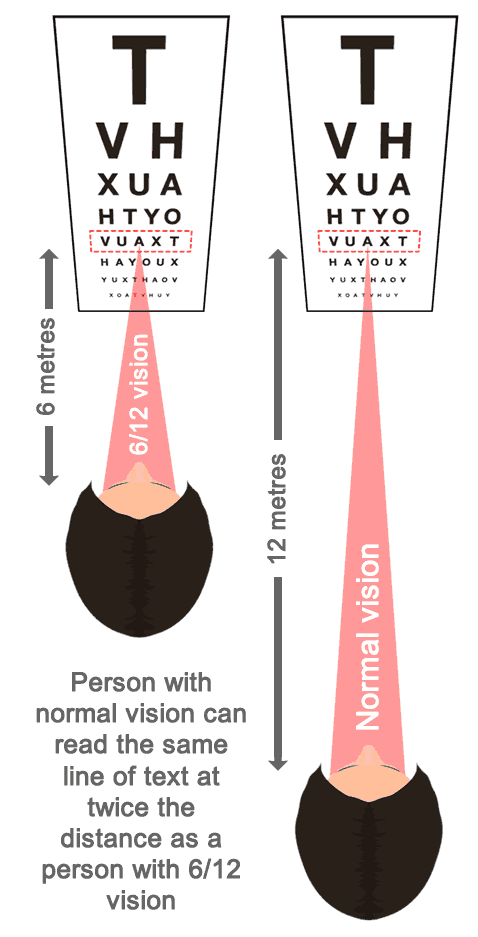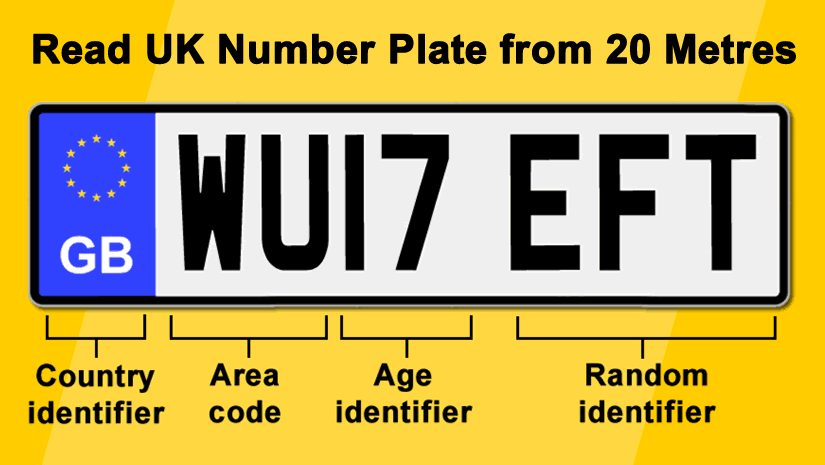Legal Eyesight Requirements for Driving UK
When you have your eyes professionally tested by an optician, you’ll receive a visual acuity score. The legal eyesight requirements for driving in the UK is to have a minimum visual acuity score of 6/12. This applies to both full licence holders and learner drivers.
What is the Meaning of 6/12 for Eyesight?
An eyesight score of 6/12 is your visual acuity test result based on the Snellen Scale eye chart. The second number on the visual acuity score (in this instance it’s 12) is based on a person with normal vision and that doesn’t require corrective vision. This means that a person with normal vision can read a specific line of text from an eye chart from 12 metres.
If you have a visual acuity score of 6/12, it means you can read the same line of text from a distance of 6 metres – half that of a person with normal eyesight.
For another example, if we consider the top largest letter on the eye chart, if a person can only read this letter from a distance of 6 metres and none of the smaller letters, their visual acuity score will be 6/60. It means they they can read this letter from 6 metres distance, whereas a person with normal eyesight can read the same letter from a distance of 60 metres.

How do I Know if I Need Glasses for Driving?
If you’re not entirely confident about your current standard of vision, the best action is to book an appointment at your local opticians. Alternatively you can test your own eyesight using the same method that the police and the DVSA (Driver and Vehicle Standards Agency) use prior to taking the car out on the driving test.
To know if you need glasses for driving, see if you can read a car number plate from a distance of 20 metres. If you’re not sure how far 20 metres is, it works out roughly at 5 car lengths.
Can the Optician Take Your Driving Licence Away?
No, opticians do not hold the power to take away a person’s driving licence.
Do Opticians Inform the DVLA?
Opticians have a duty of confidentiality to the patient, but in certain situations where the optician believes a patient has rejected medical advice to no longer drive, they may in the interest of public safety have a responsibility to report the patient to the DVLA, stating in writing that they are unfit to drive.
Driving With Poor Eyesight
Studies suggest that motorists driving with poor eyesight are four times more likely to become involved in an accident. Not only is driving with poor eyesight hazardous, but it also comes with the risk of prosecution.
If while driving the police suspect a driver of having poor eyesight, the driver will be asked to read a number plate from a distance of 20 metres (in good daylight conditions). If the driver is unable to read the number plate, the following conditions can occur:
Driving Licence Revoked
The driver’s licence is immediately revoked until the driver has an eye test and has their vision corrected. The driver must then apply to the DVLA to have their licence reinstated while supplying proof that their eyesight meets at least the minimum legal requirements for driving.
Fines and Penalty Points
Drivers who receive a notice of intended prosecution face fines issued by court of up to £1000 and three penalty points.
Prison
In extreme situations where a driver’s poor eyesight has resulted in an accident, the driver may receive a prison sentence.
Invalid Insurance
Driving with impaired vision may mean you’re not driving in accordance with the terms and conditions of your insurance policy, therefore potentially invalidating it.
Is Driving Without Glasses Illegal?
If your visual acuity score does not meet the minimum legal requirement of 6/12 for driving when you’re not wearing glasses or contact lenses, then yes it is illegal to drive.
